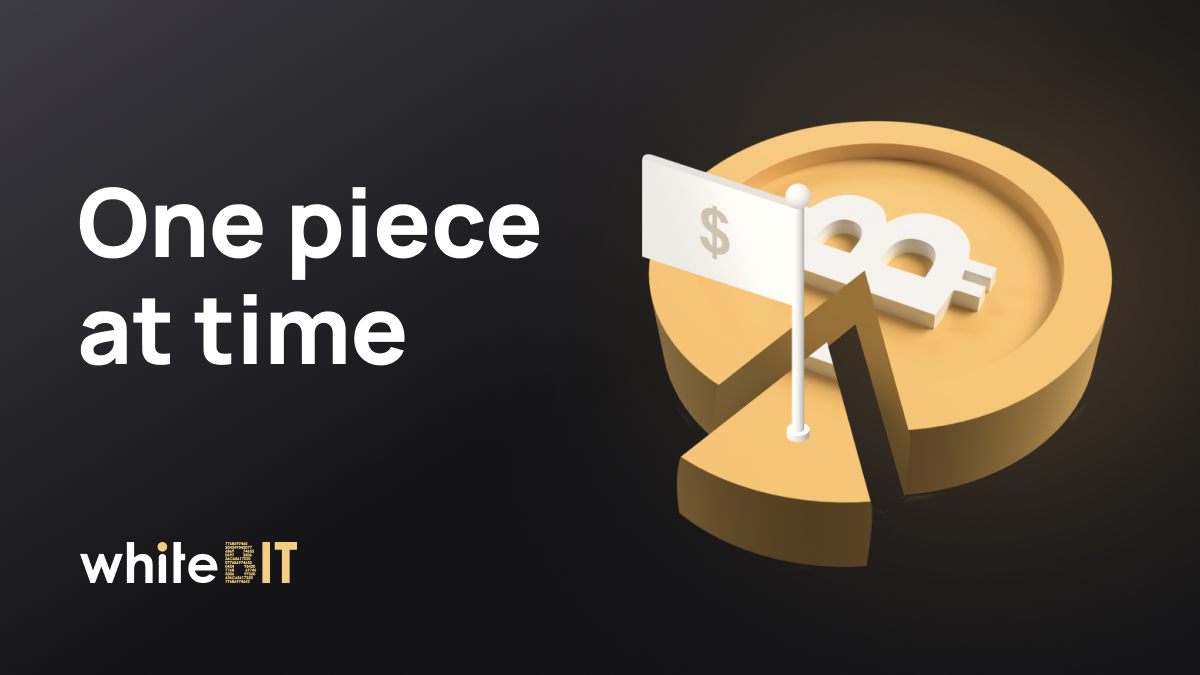What Is Return on Investment and How to Work Out ROI for Cryptocurrencies

Content
- What Is ROI in Cryptocurrency
- Step-by-Step Guide on How to Calculate ROI in Cryptocurrency
- Determining the Initial Investment
- ROI Formula
- Factors Affecting Cryptocurrency Return on Investment
- Errors in Calculating the Return on Investment Ratio
- What is a Good ROI?
- How to Automate ROI Calculations
- Advantages and Disadvantages of Return on Investment (ROI)
- What Is Annualized ROI?
- Which Are the Best and Worst Cryptocurrencies of the Year
- How Cryptocurrency ROI Compares to Traditional Market ROI
- Conclusion
- FAQ
ROI (abbreviation: Return on Investment) is one of the key metrics that investors use to evaluate the effectiveness of their investments. In cryptocurrencies, where market volatility can bring both large profits and serious losses, understanding how to calculate ROI is especially important. This metric allows you to see how successful your investment was by comparing your initial investment with the current value of the asset. In this article, we will explain return on investment, how to calculate it, and why this tool is important for evaluating the profitability of cryptocurrency investments. Even beginner investors will be able to easily apply this method in practice.
What Is ROI in Cryptocurrency
ROI is a metric that helps investors evaluate how profitable or unprofitable their investment in cryptocurrency has been. Simply put, ROI shows how much profit or loss you have made on your investment. It is calculated simply by subtracting the amount you invested from the current value of the asset, then dividing the difference by your initial investment. For example, if you bought Bitcoin for $1,000 and its current value is $1,500, your ROI would be 50%. It is a useful tool that helps you understand how effectively your money is working.
How to Figure out ROI
Calculating Return on Investment (ROI) is important to understand how profitable your cryptocurrency investments have been. Whether your investment is making a profit or a loss, which is what ROI shows, helps you make more informed decisions. If the ROI in investment is positive, you are in the black, and if it is negative, you should reconsider your strategy. In cryptocurrencies, where prices can fluctuate dramatically, it is important to regularly evaluate the effectiveness of your investments. Knowing your return ROI will not only help you better manage your risks, but also help you choose the assets that provide the highest returns, improving your overall investment strategy.
When to Calculate ROI
Calculating return on investment ROI is important at different stages of the investment path. The first time you can calculate it is after you have bought cryptocurrency and some time has passed—this will help you understand how profitable the purchase was. Then, it is worth checking how to find return on investment periodically to track the dynamics of your asset: is it growing in price or falling. It is especially important to do this before making decisions about selling an asset or buying more. Calculating ROI is also useful when you are planning long-term investments and want to evaluate how effectively your invested funds work in comparison with other assets or strategies.
Step-by-Step Guide on How to Calculate ROI in Cryptocurrency
This is how to get ROI:
- Determine your initial investment: First, find out how much you spent to buy cryptocurrency. This could be the amount you invested in Bitcoin or another asset, such as $1,000.
- Find out the current value: See how much your cryptocurrency is worth now. If the asset’s price has risen to $1,500, that’s your current value.
- Subtract your initial investment from your current value: Calculate the difference between the asset’s current value and the amount you invested. For example, $1,500 – $1,000 = $500.
- Divide the difference by your initial investment: Now divide that difference by the amount you invested. $500 ÷ $1,000 = 0.5.
- Multiply the result by 100 to get the percentage: Multiply 0.5 by 100 to get the percentage. In this example, the ROI is 50%. This is how to compute return on investment the fastest way.
- Analyze the result: A positive result means a profit, while a negative result means a loss.
Determining the Initial Investment
Determining your initial investment is the first step in calculating ROI. Simply put, it is the amount of money you have invested in buying cryptocurrency at the time of the transaction. It includes all expenses: the purchase price of the asset and, if necessary, additional fees, such as for transactions on an exchange. Let’s say you bought Bitcoin for $1,000 and paid the exchange a $20 fee, then your initial investment would be $1,020. Knowing this amount accurately will help you correctly estimate your profit or loss when calculating the meaning of ROI. Without taking all expenses into account, the calculation result may be inaccurate.
Calculating the Current Value
Calculating the current value is an important step in evaluating your cryptocurrency investment. The current value is the price of an asset at a given time. To determine this, you need to look at the current price of your cryptocurrency on the exchange. For example, if you bought Bitcoin for $1,000 and its current market price is $1,500, that is its current value. Also, be sure to consider the number of coins you own, if you have more than one. Once you have determined the current value, you can calculate how much your investment has changed since you bought it and calculate your ROI.
ROI Formula
The Return on Investment or ROI calculation formula is simple and understandable even for beginner investors. To calculate ROI, use the formula for return on investment: you need to take the current value of the asset, subtract the initial investment from it, and divide the result by the amount of this investment. The return on investment formula looks like this:
ROI = (Current Value – Initial Investment) ÷ Initial Investment.
Then multiply the result by 100 to get a percentage. For example, if you invested $1000 and your asset is now worth $1500, your ROI will be 50%. This formula helps you quickly understand how profitable or unprofitable your cryptocurrency investments were. ROI computation is simple.
Return on Investment Example
Let’s say you bought $2,000 worth of Ethereum. A year later, the price of the cryptocurrency has increased, and your asset is now worth $3,000. To calculate the ROI, first subtract the initial investment ($2,000) from the current value ($3,000): $3,000 – $2,000 = $1,000. Now divide this difference by the initial investment: $1,000 ÷ $2,000 = 0.5. Multiply the result by 100 to get a percentage: 0.5 × 100 = 50%. Your ROI was 50%, which means you earned 50% of your initial investment in a year. This return on investment equation shows that the investment was successful and brought in a profit, which is what the ROI should be.
Factors Affecting Cryptocurrency Return on Investment
Return on investment is primarily dependent on a variety of factors that can either increase or decrease profits. One key factor is market volatility, where prices can change dramatically over short periods of time. It is also important to consider the cryptocurrency liquidity—how easy it is to buy or sell a cryptocurrency. Other factors include transaction fees and changing regulations in different countries, which can affect the value of cryptocurrencies.
Market Volatility
Cryptocurrencies are known for their high volatility, which means sharp price fluctuations. This can lead to both rapid increases in value and sudden losses. Investors should be prepared for such changes and understand that high cryptocurrency volatility can significantly affect the investor’s return on investment, both positively and negatively.
Time to Invest
The time when you buy or sell, cryptocurrency plays an important role in profitability. If you buy an asset at a time of decline and sell it at a time of growth, the ROI returns on investment will be high. On the contrary, if you sell at the peak of the decline, you can incur significant losses. The timing of entry into the market is important to consider.
Type of cryptocurrency
Not all cryptocurrencies are created equal in terms of growth potential. Bitcoin and Ethereum are considered more stable assets with high demand, while other altcoins can be riskier and more volatile even during high altseason index. The choice of a specific cryptocurrency, as well as the ROI of the project, also affects the return on investment, so it is important to understand the risks of each asset.
Errors in Calculating the Return on Investment Ratio
Here is a table with examples of errors when calculating the return on investment (ROI) in cryptocurrency:
| Error | Description | Example |
| Ignoring transaction fees | When calculating ROI, investors sometimes forget to consider in the formula for ROI the fees that are charged when buying and selling cryptocurrency, for example, during arbitrage. This can significantly reduce the actual profit. | You bought Bitcoin for $1,000 but paid $50 in fees. The ROI estimate does not take the fees into account, which inflates your profit. |
| Misjudging market trends | Failure to account for market volatility or sudden price changes can result in inaccurate ROI calculations, especially if relying on immediate price changes. | You invested $2000 in an altcoin, its price temporarily rose to $2500, but after the fall you did not recalculate the ROI, which led to an overestimated profit. |
| Ignoring tax implications | Not accounting for taxes on profits from selling cryptocurrency can distort the true outcome of an investment, as taxes can reduce net profit. | You sold cryptocurrency and earned $500, but you didn’t take into account that you need to pay taxes, which will reduce your net profit to $400. |
These errors can result in ROI calculations being inaccurate and giving a false impression of the return on investment.
What is a Good ROI?
A good ROI in crypto is usually considered to be above 10-20%, but it depends on market conditions and your investment horizon. In a fast-growing crypto market, an ROI of 50% or higher can be considered excellent, especially if the investment was short-term. However, it is always important to consider the risks and volatility.
How to Automate ROI Calculations
You can automate the calculation of the return on investment using special tools, such as online investment calculators or stock exchange platforms that automatically track changes in asset prices. These services allow you to calculate ROI in real time, considering commissions and other factors. This helps save time and minimize calculation errors.
Negative ROI
A negative ROI means that your investment has made a loss. This happens when the current value of the asset is lower than the amount you invested. For example, if you bought cryptocurrency for $1,000 and its current value is $800, your ROI will be negative. This result signals that your investment is ineffective.
How to Increase ROI
To increase your ROI, it is important to choose the right moments to buy and sell cryptocurrency based on market analysis and trends, and it is also important to understand what is market capitalization. Investing in promising assets with long-term potential can also increase profitability. In addition, fees and taxes should be considered when calculating profits to avoid making mistakes. Using strategies such as portfolio diversification will help reduce risks and increase the overall return on your investments.
When ROI Is not Informative
Return on investment (ROI) can be uninformative in short-term investments, especially in volatile markets where cryptocurrency prices fluctuate wildly. In such conditions, ROI can fluctuate wildly and not reflect the long-term picture. It also does not include important factors such as holding time, taxes, and fees, which can distort the actual profit. Therefore, figuring ROI should be used with other metrics to fully evaluate an investment.
Advantages and Disadvantages of Return on Investment (ROI)
ROI Benefits
- Ease of calculation: The ROI formula is easy to apply, and any investor, even a beginner, can calculate this indicator without complex calculations.
- Versatility: ROI can be used to evaluate any type of investment, including cryptocurrency, stocks or real estate.
- Quick profitability assessment: ROI allows you to quickly see whether an investment is profitable or losing money, which helps you make quick decisions.
- Comparison of different investments: ROI allows you to compare the profitability of different assets or projects, which makes it easier to choose the best option.
Disadvantages of ROI
- Doesn’t take time into account: ROI doesn’t reflect how much time has passed since the investment, which is important for assessing long-term performance. For example, 10% profit in a month is more profitable than in a year, but ROI won’t show it.
- Ignores risks: The indicator does not consider the level of risk associated with investments. Two assets can have the same ROI but different risks, which is important to consider, for example, schemes like dump and pump.
- Does not include taxes and commissions: ROI does not consider additional expenses, such as income taxes or exchange commissions, which can lead to an overestimation of the real profitability.
- Limited in complex investments: If you have a complex crypto portfolio, where you need to consider many factors, ROI may need to be more informative.
What Is Annualized ROI?
Annualized ROI is a metric that measures the return on an investment over a year, regardless of how long the investment lasts. It is especially useful when investments were made for different periods of time and you want to compare their performance. To calculate annualized ROI, divide the total ROI by the years or months the investment lasted, and consider the effect of time on returns.
Bitcoin ROI
What is return on investment ROI in Bitcoin? Bitcoin ROI shows how profitable investments in this cryptocurrency have been over a certain period. Due to the huge price increase since its inception, Bitcoin often has a significantly higher return on investment than traditional assets. For example, investors who bought Bitcoin several years ago have made huge profits. However, due to its high volatility, its ROI can fluctuate greatly in the short term, making the timing of investments important.
Ethereum ROI
Ethereum ROI reflects the return on investment in this cryptocurrency over a certain period. Ethereum, as the second most popular cryptocurrency after Bitcoin, has also shown significant growth since its launch. Ethereum’s high ROI is due to its wide applicability for creating smart contracts and decentralized applications. However, as with Bitcoin, volatility can significantly affect ROI in the short term, which requires caution when planning investments.
Return on Investment for Other Popular Cryptocurrencies
Return on investment (ROI) for popular cryptocurrencies like WhiteBIT Coin (WBT), Solana (SOL), and Cardano (ADA) can vary significantly depending on the time period and market conditions. WhiteBIT Coin, as a token of one of the largest exchanges, has shown a high ROI due to the growth of the Whitechain ecosystem. Solana, with its high transaction speed and low fees, has attracted the attention of investors, leading to an impressive increase in value. Cardano, known for its resilient architecture, has also shown a positive ROI, especially after network upgrades. There are many types of cryptocurrencies for which volatility can change the figures quickly, but calculating ROI remains an important tool for assessing profitability.
Which Are the Best and Worst Cryptocurrencies of the Year
Best cryptocurrencies of the year:
- Bitcoin (BTC)
Despite its volatility, Bitcoin remains a leading cryptocurrency with a high level of trust. Although its price may fluctuate, it has shown significant growth recently and often remains among the leaders in ROI, with Bitcoin dominance playing a decisive role here.
- Ethereum (ETH)
In 2024, Ethereum continues to show good ROI thanks to its Proof-of-Stake upgrade and its popularity for creating smart contracts and decentralized applications.
- Solana (SOL)
Solana has become one of the fastest growing cryptocurrencies due to its speed and low fees. Many investors have made high profits due to the growing popularity of this network among developers.
- WhiteBIT Coin (WBT)
With the support of one of the largest crypto exchanges, WhiteBIT Coin continues to show steady growth, especially against the backdrop of the growth of the WhiteBIT ecosystem.
Worst cryptocurrencies of the year:
- Terra (LUNA)
After a major crash in 2022, LUNA has failed to recover. Loss of investor confidence has resulted in low ROI and significant losses for holders.
- Shiba Inu (SHIB)
Despite its former popularity, Shiba Inu has shown weak returns over the past year. Like many other meme cryptocurrencies, it suffers from high volatility and low practical use, with the fear and greed index also high for this type of cryptocurrency.
How Cryptocurrency ROI Compares to Traditional Market ROI
The ROI of cryptocurrency is often significantly higher than the ROI of traditional markets such as stocks or bonds due to the high volatility and rapid growth of crypto assets. Cryptocurrencies can show huge returns in a short period of time, but this is also associated with greater risks. While traditional markets are more stable, their ROI is usually lower but more predictable, which makes them attractive to conservative investors.
Alternatives to ROI
Alternatives to ROI include several other metrics that help evaluate an investment’s effectiveness. IRR (internal rate of return) takes time and compound interest into account, making it useful for long-term projects. ROE (return on equity) measures profitability relative to shareholders’ equity. The payback period shows how long it will take for an investment to pay off. These alternatives provide a more complete picture of profitability, especially in complex investment scenarios.
Conclusion
ROI is a simple and effective tool for assessing the profitability of your cryptocurrency investments. It allows you to understand how successful your investments have been and helps you decide whether to continue holding an asset or sell it. However, it is important to remember that ROI does not consider factors such as time, risk, taxes, and fees, so it does not always give the full picture. Using ROI along with other metrics will help you more accurately assess your investments and minimize risks. It is important to recalculate ROI regularly to always be aware of the effectiveness of your investments in the volatile crypto market.
FAQ
ROI stands for "Return on Investment." It measures how much profit or loss you've made from an investment compared to its cost. It's a key metric in evaluating the success of an investment, calculated as a percentage of the initial amount invested.
A good ROI varies by industry and investment type, but generally, an ROI above 10% is considered strong. In crypto, higher returns are common, but so are risks. The ideal ROI balances profit potential with acceptable risk, aligning with your investment goals and risk tolerance.
To calculate ROI, subtract the investment cost from the final value, then divide that by the original cost. Multiply the result by 100 to get a percentage. Formula: ROI = (Final Value - Initial Cost) / Initial Cost x 100. This gives you a clear profit or loss percentage.










